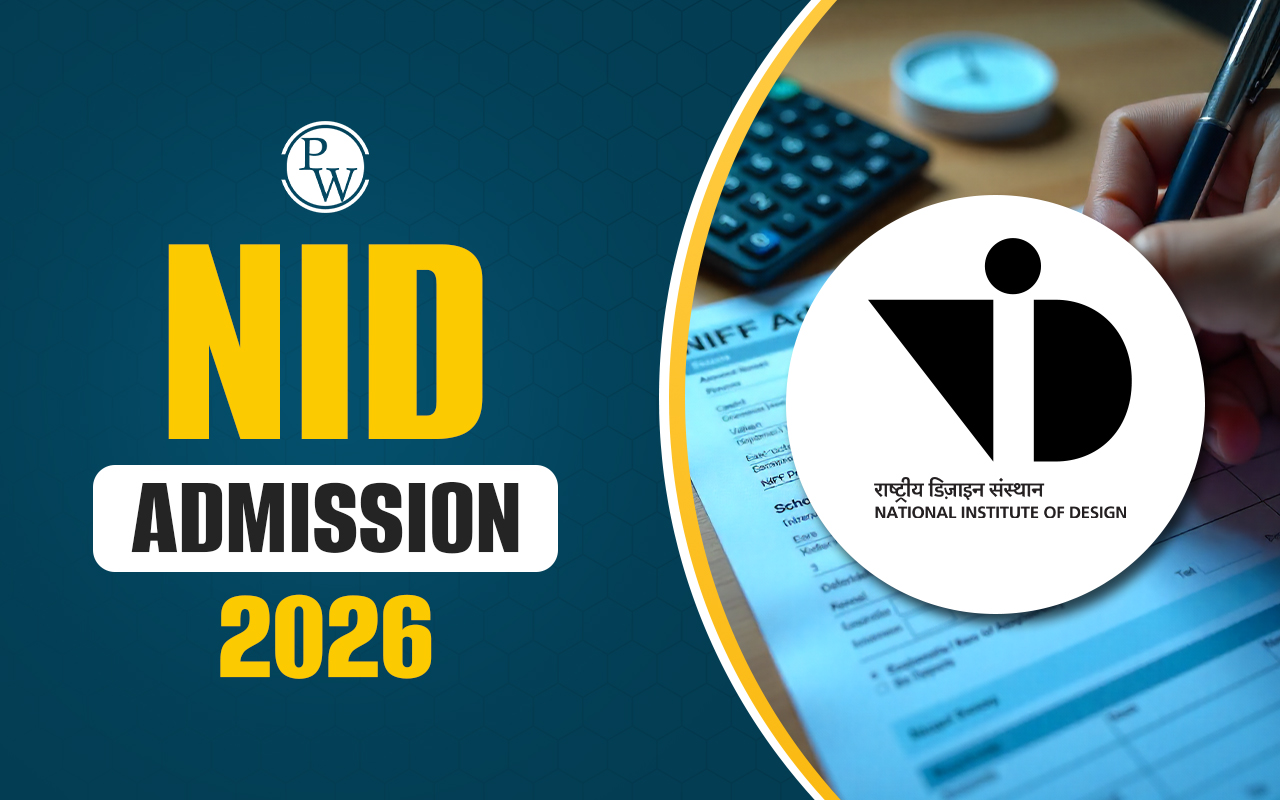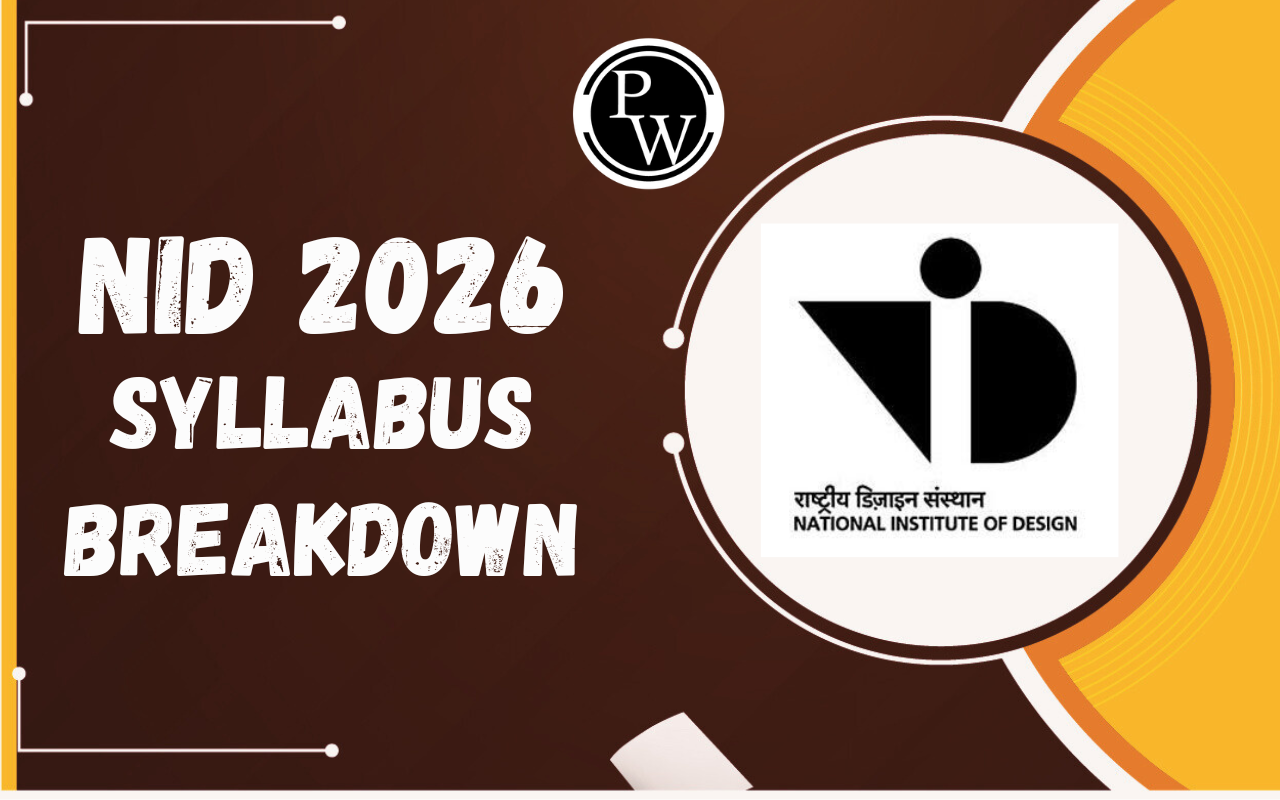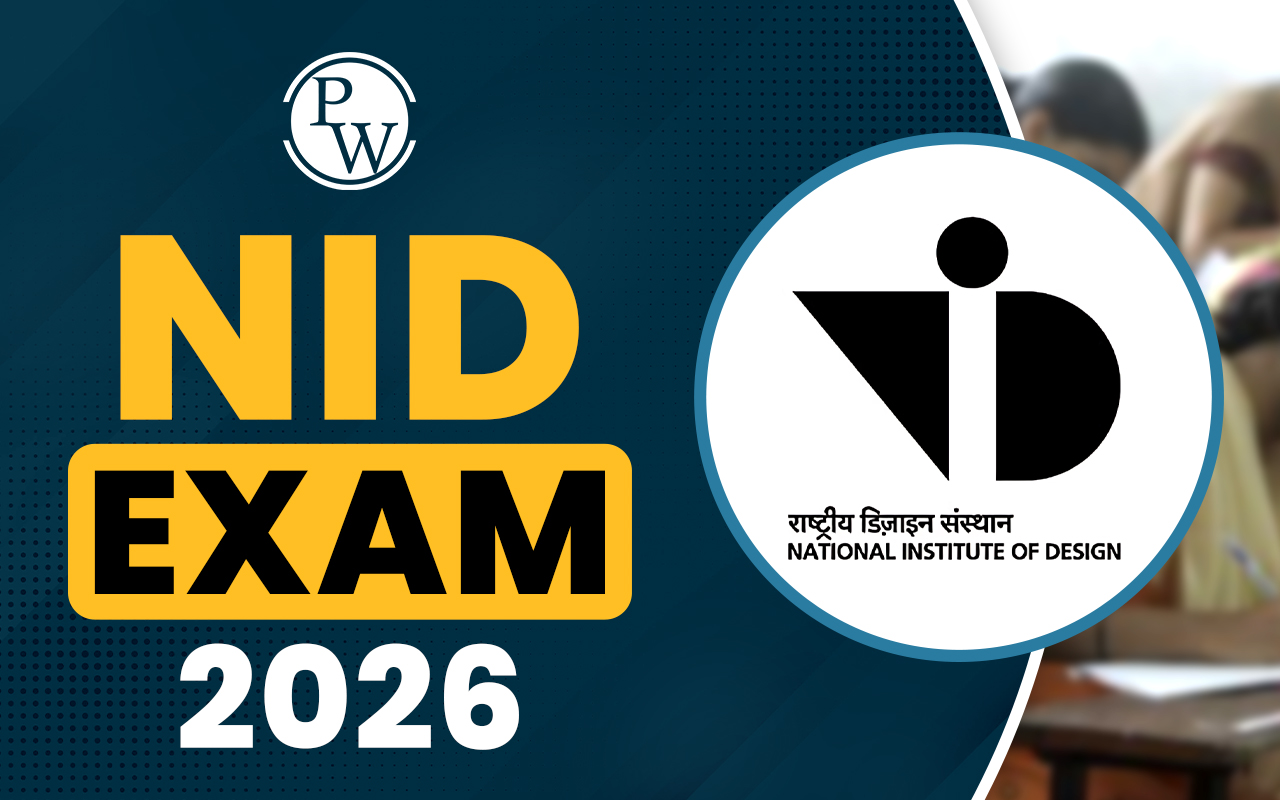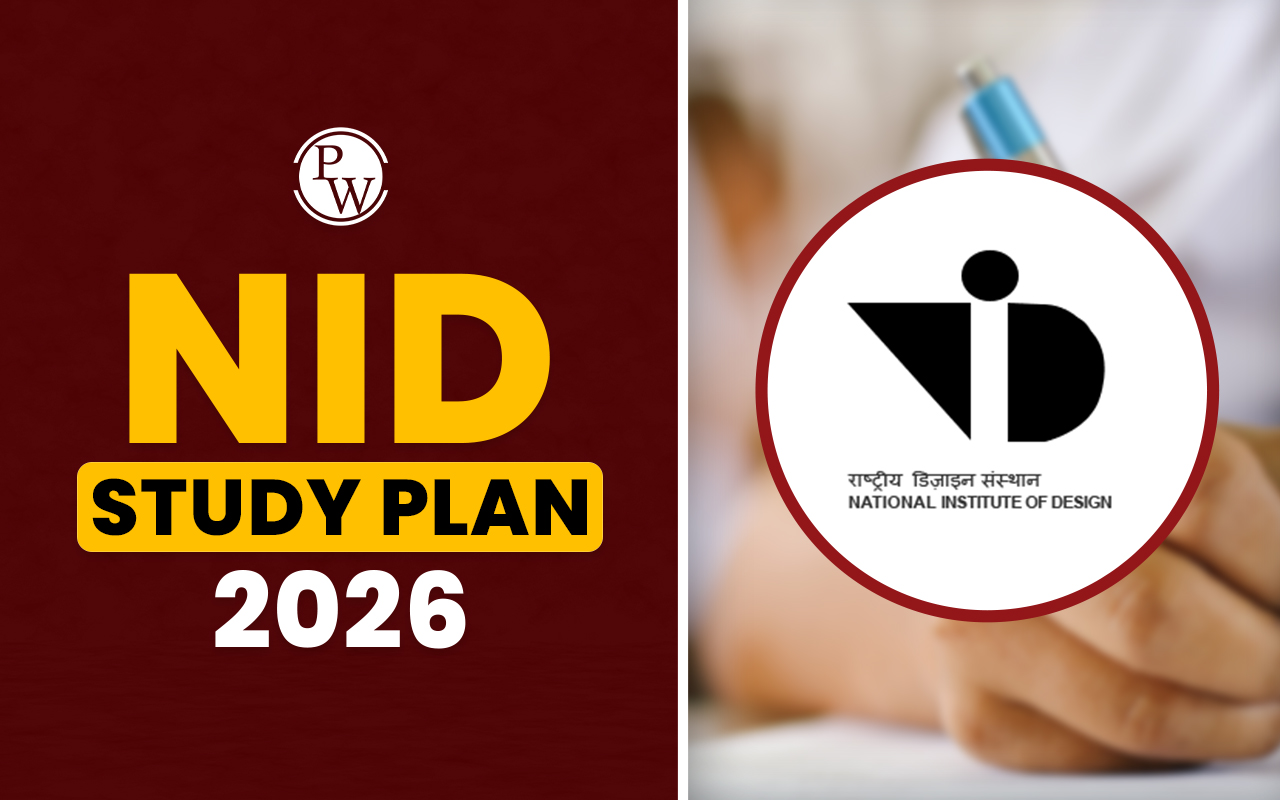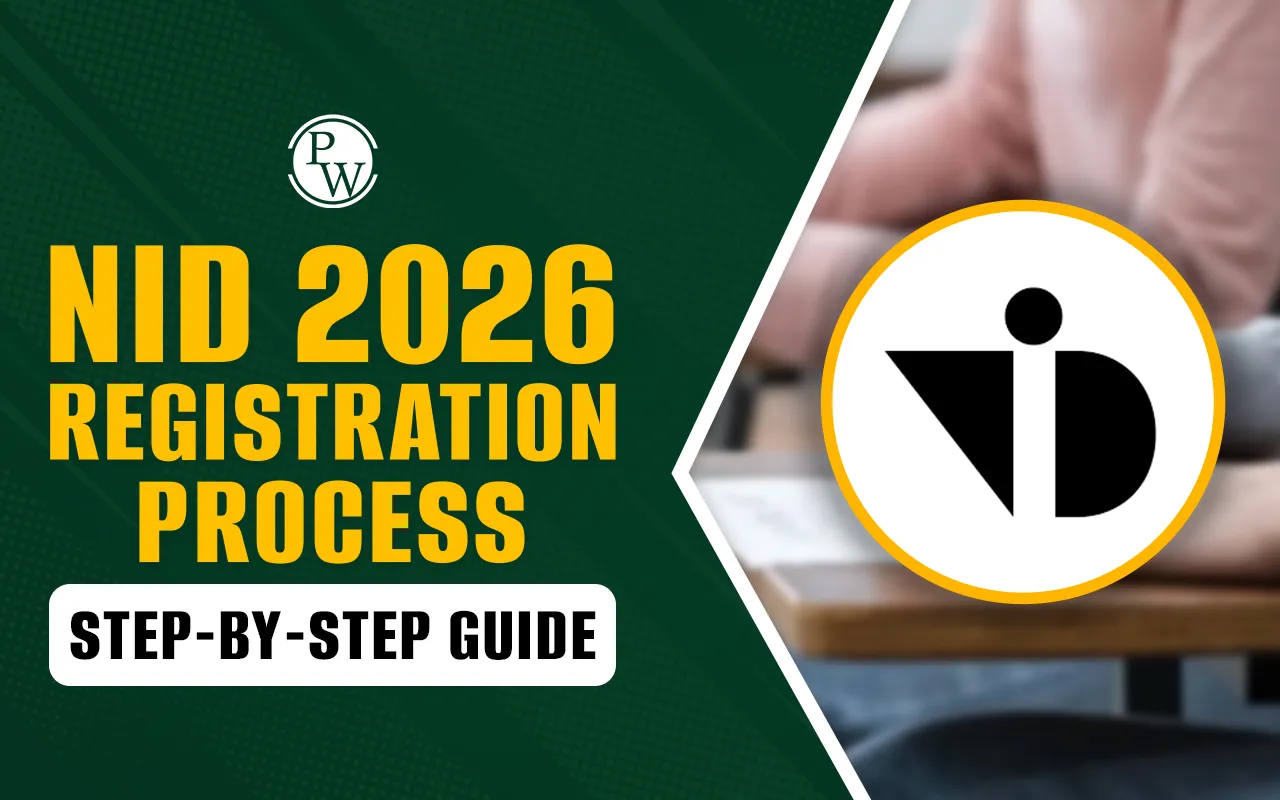
NATA Syllabus 2025: The Council of Architecture (CoA) published the NATA 2025 syllabus in its official brochure. The syllabus is designed to comprehensively assess a candidate’s aptitude for architecture through a blend of cognitive, analytical, and creative skills. The exam covers a wide range of topics, including diagrammatic, numerical, verbal, inductive, situational, logical, and abstract reasoning, as well as mathematics and general awareness related to architecture. Candidates are also tested on their visual perception, aesthetic sensitivity, and understanding of architectural concepts, building materials, and design principles.
Familiarizing yourself with the NATA 2025 syllabus helps optimize study time by focusing on relevant exam topics. NATA exam 2025 commenced from 7th March and will continue till 28th June 2025. Prospective students should regularly check for updates on NATA application forms, admit cards, and more.
NATA Syllabus 2025 Overview for Part A & B
The NATA syllabus 2025 is designed to evaluate a candidate's aptitude for architecture through various testing formats. The syllabus covers a range of topics, including drawing and composition, general aptitude, mathematics, and reasoning. Understanding the NATA syllabus 2025 is crucial for effective preparation, enabling candidates to focus on the essential areas and plan their studies accordingly. The exam assesses skills such as visual and logical reasoning, design sensitivity, and general knowledge of architecture.
The syllabus is divided into two parts: Part A, which is the Drawing and Composition Test, and Part B which consists of Multiple Choice Questions (MCQs).
Part A: Drawing and Composition Test
-
A1: Composition and Color Test: This section involves creating suitable compositions for various situations and coloring them appropriately. It includes rearranging various shapes in a visually appealing manner and coloring them suitably.
-
A2: Sketching and Composition (Black and White): Ability to draw, visualize, and depict a situation involving buildings/their components, people, environments, and products with an understanding of scale, proportions, textures, shades, and shadows.
-
A3: 3D Composition: Creating interesting 3D compositions for a given situation using a provided kit.
Part B: MCQs
- Visual Reasoning: Assesses the ability to understand and reconstruct 2D and 3D compositions and knowledge about their composition and technical concepts.
- Logical Derivation: Tests the ability to decode a situation, composition, or context and generate meaning by understanding minute information and concluding logically.
- G.K. Architecture & Design: Evaluates general awareness of architecture and design, current issues, recent episodes, knowledge about important buildings, historical progression, and innovation in materials and construction technology.
- Language Interpretation: Tests the ability to correctly and logically generate the meaning of words and sentences and understand English grammar.
- Design Sensitivity: Assesses the ability to observe, record, and analyze people, spaces, products, and environments, along. with critical thinking, reasoning, and the ability to identify subtle communications
- Design Thinking: Evaluates the ability to understand semantics, metaphors, problem identification and definition, and analysis of a given situation.
- Numerical Ability: Tests basic mathematics and its association with creative thinking, including the ability to unfold a space with the use of geometry
NATA 2025 General Aptitude Syllabus
The NATA aptitude test includes 125 questions of various types: Multiple-Choice (MCQ), Multiple Select (MSQ), Preferential Choice (PCQ), and Numerical Answer (NAQ). To gauge the exam's difficulty and question types, solving previous years' papers is recommended. Topics covered in the general aptitude section include:
- Diagrammatic Reasoning: Assessing logical reasoning using diagrams and scenarios
- Numerical Reasoning: Testing mathematical ability through simple problems
- Verbal Reasoning: Evaluating the ability to analyze verbal logic
- Inductive Reasoning: Testing pattern recognition and data analysis skills
- Situational Judgment: Assessing problem-solving abilities
- Logical Reasoning: Recognizing patterns, sequences, or relationships between shapes and imagery
- Abstract Reasoning: Assessing general knowledge and application in new contexts
Other Topics from NATA 2025 Syllabus
Additional topics in the NATA 2025 syllabus include mathematics, physics, geometry, language interpretation, design principles, aesthetic sensitivity, color theory, lateral thinking, visual perception, architectural vocabulary, building construction techniques, and current affairs. Prepare effectively for NATA by incorporating expert tips into your study regimen.
- Mathematics
- Physics and Geometry
- Language and interpretation
- Elements and principles of design
- Aesthetic sensitivity
- Color theory
- Lateral thinking and logical reasoning
- Visual perception and cognition
- Graphics and imagery
- Building anatomy and architectural vocabulary
- Basic techniques of building construction and material knowledge
- General knowledge and current affairs
NATA 2025 Maths Syllabus
To achieve high marks in mathematics, prioritize topics such as Coordinate Geometry, Algebra, Permutation and Combination, Statistics and Probability, Matrices, and logarithms. A well-organized study plan is crucial for excelling in the mathematics section of NATA. Students can consult the NATA maths syllabus provided in the table below:
- Algebra: Definitions of A. P. and G.P.; General term; Summation of first n-terms of series ∑n, ∑n^2, ∑n^3; Arithmetic/Geometric series, A.M., G.M. and their relation; Infinite G.P. series and its sum.
- Logarithms: Definition; General properties; Change of base.
- Matrices: Concepts of m x n (m ≤ 3, n ≤ 3) real matrices, operations of addition, scalar multiplication, and multiplication of matrices. Transpose of a matrix. The determinant of a square matrix. Properties of determinants (statement only). The minor, cofactor, and adjoint of a matrix. Non-singular matrix. The inverse of a matrix. Finding the area of a triangle. Solutions of system of linear equations (Not more than 3 variables).
- Trigonometry: Trigonometric functions, addition and subtraction formulae, formulae involving multiple and sub-multiple angles, and general solution of trigonometric equations. Properties of triangles, inverse trigonometric functions, and their properties.
- Coordinate geometry: Distance formula, section formula, area of a triangle, condition of collinearity of three points in a plane. Polar coordinates transformation from Cartesian to polar coordinates and vice versa. Parallel transformation of axes, concept of locus, elementary locus problems. Slope of a line. Equation of lines in different forms, angle between two lines, condition of perpendicularity and parallelism of two lines. Distance of a point from a line, distance between two parallel lines. Lines through the point of intersection of two lines. Equation of a circle with a given centre and radius. Condition that a general equation of second degree in x, y may represent a circle. Equation of a circle in terms of endpoints of a diameter, equation of tangent, normal, and chord. Parametric equation of a circle. Intersection of a line with a circle. Equation of a common chord of two intersecting circles.
- 3-Dimensional Coordinate geometry: Direction cosines and direction ratios, distance between two points and section formula, equation of a straight line, equation of a plane, distance of a point from a plane.
- Theory of Calculus: Functions composition of two functions and inverse of a function, limit, continuity, derivative, chain rule, derivatives of implicit functions and functions defined parametrically. Integration is a reverse process of differentiation, indefinite integral of standard functions. Integration by parts. Integration by substitution and a partial fraction. Definite integral is a limit of a sum with equal subdivisions. Fundamental Theorem of integral calculus and its applications. Properties of definite integrals. Formation of ordinary differential equations, solution of homogeneous differential equations, separation of variables method, linear first-order differential equations.
- Application of Calculus: Tangents and normals, conditions of tangency. Determination of monotonicity, Maxima, and minima. Differential coefficient as a measure of rate. Motion in a straight line with constant Acceleration. Geometric interpretation of definite integral as an area, calculation of area bounded by elementary curves and Straight lines. Area of the region is included between two elementary curves.
- Permutation and combination: Permutation of n different things taken r at a time (r ≤ n).
- Statistics and Probability: Measure of dispersion, mean, variance, standard deviation and frequency distribution. Addition and multiplication rules of probability, conditional probability and Bayes’ Theorem, independence of events, repeated independent trials and Binomial distribution.
NATA 2025 Drawing Syllabus
Based on last year's NATA entrance exam syllabus, the drawing test was not included. However, for NATA 2025, understanding the drawing syllabus is crucial. Below, we have outlined the key aspects of the NATA Drawing Syllabus 2025:
- Conceptualization and Visualization by organizing objects in memory.
- Understanding scale and proportion of objects, geometric composition, shapes, building forms and elements, aesthetics, color texture, harmony, and contrast.
- Drawing patterns including geometrical and abstract designs.
- Transformation of forms in 2D and 3D such as union, subtraction, rotation, surfaces, and volumes.
- Generating plans, elevations, and 3D views of objects.
- Creating 2D and 3D compositions using given shapes and forms.
- Perspective drawing and sketching urbanscape and landscape.
- Drawing common day-to-day life objects like furniture, equipment, etc., from memory.
NATA 2025 Syllabus for Chemistry
Here are the essential topics to focus on within the NATA chemistry syllabus:
- Some Basic Concepts of Chemistry
- Structure of Atom
- Classification of Elements and Periodicity in Properties
- Chemical Bonding and Molecular Structure
- States of Matter: Gases and Liquids
- Chemical Thermodynamics
- Equilibrium
- Redox Reactions
- Hydrogen and its Compounds
- p-Block Elements
- Organic Chemistry: Some Basic Principles and Techniques
- Hydrocarbons
- Environmental Chemistry
NATA Syllabus for Physics
Here are the key topics you need to prepare for in the NATA Physics Syllabus:
- Electrostatics: Electric charges and Fields; Electrostatic Potential and Capacitance
- Current Electricity: Electric Current, Ohm's Law, Kirchhoff's Laws; Magnetic Effects of Current and Magnetism; Moving Charges and Magnetism; Magnetism and Matter
- Electromagnetic Induction and Alternating Currents: Electromagnetic Induction; Alternating Currents
- Optics: Ray Optics and Optical Instruments; Wave Optics; Dual Nature of Radiation and Matter
- Atoms and Nuclei: Atoms; Nuclei
- Electronic Devices: Semiconductor Electronics; Materials, Devices, and Simple Circuits
NATA 2025 Preparation Books
The right preparation books are essential for excelling in the NATA 2025 exam, as they help you build a strong foundation in mathematics, general aptitude, and drawing skills. With a wide range of study materials available, candidates should choose books that offer clear explanations, ample practice questions, and updated content aligned with the latest exam pattern. Some of these books are listed below.
NATA 2025 Preparation Tips
Here are some preparation tips for the NATA 2025 entrance exam.
- Focus on important topics like calculus, algebra, and geometry. Solve a variety of problems to improve problem-solving speed and accuracy.
- Regularly practice drawing and sketching various objects, scenes, and perspectives. Work on your observation skills to improve accuracy and creativity, and time yourself to get better under exam conditions.
- Engage in exercises that improve your ability to visualize and represent 3D objects on a 2D surface, like perspective drawing and 3D modeling.
- Simulate the full exam by taking mock tests that include both Part A (online) and Part B (drawing).
- Solve past years’ papers to familiarize yourself with the types of questions, and understand the pattern of the exam.
NATA Syllabus 2025 FAQs
What topics are covered in NATA 2025?
How many questions are there in the NATA aptitude test?
Why is familiarizing with NATA 2025 syllabus important?
Which sections are included in the NATA exam?
Where can I download the NATA 2025 admit card?

